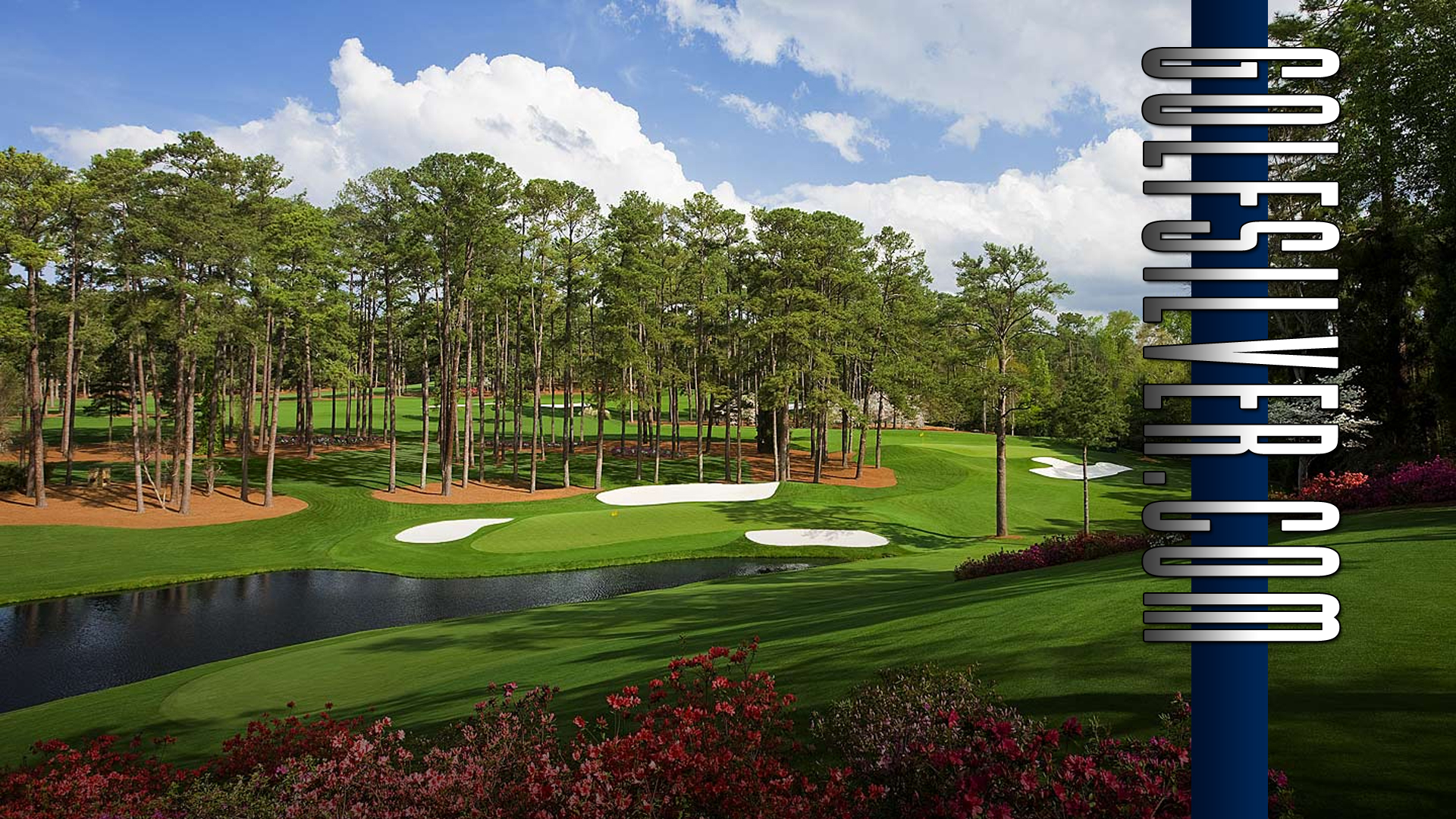|


|

|

About watching Repeater Swings |
- Don’t look for a “position”, look at in a general Sybervision ** way. Look for similarities and/or differences of areas that may be of interest to you like:
swing shapes, set-up/address looks, impact areas, swing motions, swing finishes ,etc.
As an example, if your Pro/PGA instructor talks about how your arms should swing, look at how a certain player does it and how another may do it. Keep in mind, the Tour Pros have wonderful hand-eye-coordination and thus they are expert Manipulators of Impact.
Your general visualization is more important than some magic position.
- Different camera angles can make certain positions “appear” a certain way, but are not what you might think you see because of the different angles the video could have been shot at.
Video is a great learning tool, but only within the context of learning a "feel" that is individual, which is to say …yours.
- Also we usually don’t know what kind of shot the players were trying to hit, which can affect its “look”. If the shot the player was trying to produce had a left- to- right shape, or right- to- left shape, that factor could easily affect the player’s different set-ups, hand/arm swing shapes.
Some swings are taken on a driving range while others are on a golf course during play. Advanced players have learned to always try to hit shots to targets, with some sort of shape to the ball’s flight. That requires “feel” adjustments, which could easily change a look of a swing at that time.
The Loading Period:
- The swings “Loading” may take a few seconds to load.
- Give the page a full load time. Some swings may appear earlier than others, let them load completely. You will find the next time you view this page, whether going back and forth today or the next day, month, etc. the swings will appear and load MUCH quicker.
** SyberVision or CyberVision has been referred to as Muscle Memory Programming, or as often referred to as“Repititous Sensory Stimulation”. Some say SyberVision could be used as a “dramatic improvement in the quality and consistency of a player”.
Basically, a theory based on viewing enough times, you may feel "your" swing's motions/positions better. You have to SEE before you can DO.
|
|
Mickey Wright |
|
Mickey Wright
height- 5', 9"
weight-n/a lbs
birthday 2/14/1935
birthplace-California
|
Mickey Wright is an excellent example of very good swing sequencing. The way she uses all her swing components from feet
to head is the way it should be done.
|
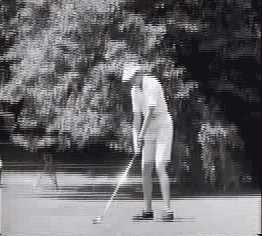
wait-once loaded--swings above never stop
|
”You can’t take a car from a dead start and put it immediately up to 70 miles an hour. No matter how powerful your engine, you must have a gradual acceleration of speed. So it is in a golf swing.”
---Mickey Wright
|
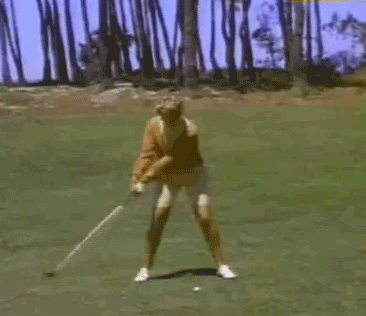
wait-once loaded--swings above never stop
|
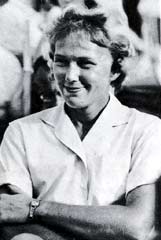
|
|
THE MOST INFLUENTIAL TEACHER, however, was Harry Pressler. He was known throughout California as the finest teacher of female players there was.
"Every Saturday, my mother would drive me 2½ hours up to San Gabriel Country Club to see him for a 30-minute lesson. My swing, which people have praised, really is Harry's swing. On the wall of his office he had a photograph of Ben Hogan practicing with a belt around his thighs and a band around his upper arms, a reminder to keep them as close together during the swing as possible. For all the talk about the old way being about individual styles, Harry was adamant that there was one good swing. Club square going back. Right hand under the shaft in the "tray" position at the top, the club at a 45-degree angle. Clubface square halfway down, at impact and into the follow-through".
"He would physically move me into these positions so I could train my muscles to flow into them naturally. My swing might have had style in terms of rhythm and tempo, but in truth it was somewhat manufactured. But it was a swing for a lifetime, and boy, did it work".
|
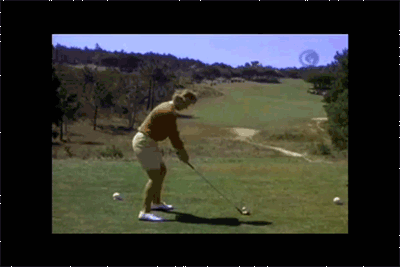
wait-once loaded--swings above never stop
|
Spine stays tilted through follow-through so that the club can stay on plane.
|
Mickey Wright had a great swing, one that I enjoy watching over and over. She had quite a bit of distance with the driver, reportedly out driving Babe Zaharias. Once recorded a drive of 270 yards on the LPGA Tour, and that would have been with a wood-wood driver!!
Her strength however, was her Long Iron play,
which says a lot about this swing.
|
1966: Western Open
1964: U.S. Women's Open
1963: Western Open, LPGA Championship
1962: Titleholders Championship, Western Open
1961: U.S. Women's Open, LPGA Championship, Titleholders Championship
1960: LPGA Championship
1959: U.S. Women's Open
1958: LPGA Championship, U.S. Women's Open
Mickey Wright won three of the four LPGA majors the U.S. Women's Open, LPGA Championship and the Titleholders Championship. She is the only woman in LPGA history to have won the LPGA Championship four times (1958, '60, '61, '63).
Her 13 victories in 1963 (of 32 Tour events, 40.6%) is a record that probably never will be touched.
note: Annika Sorenstam had tied the record 13 wins)
|
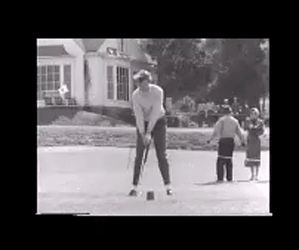
wait-once loaded--swings above never stop
|
In the 1961 Women’s U.S. Open, Mickey fired a 69 on a specially severe course at Baltusrol, which was playing a very long 6,400 yards. That round, because it was in a U.S. Open and on a tough course, ranks as one of the best rounds played on the LPGA Tour.
|
|
|
"Women should rely upon their woods more, without fear of being criticized. We're after results and whatever club will put us where we want to be is the club to use."
--Mickey Wright
|
|
|
In the 10 years after turning professional in 1956, she lowered the best women’s scoring average from the 75-76 mark to 72-73.
|
Return to Players Swings List |
Tiger Woods |
|
Tiger Woods
height- 6', 1"
weight-185 lbs
birthday 12/30/1975
birthplace-California
|
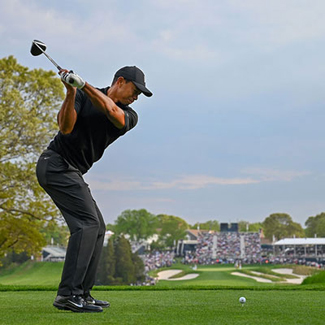
|
I’d have to say Tiger Woods is probably the greatest player of my lifetime. With all the accomplishments in his golfing career, I think what his future brings may just surpass what has happened thus far, believe it or not.
okay, maybe not...
|
|
|
The golfer, the player is something else. The person, the role model, the image "was" something else again.
Personally, I thought Tiger was going to tame that wild driver swing some day and start to make the same swing that he does with all the other clubs.(like the featured swings below)
When he does, look for him to go through another period of domination.
Hopefully on the Champions Tour.
As many of you know, Tiger grew up in our area. Lived in Cypress, went to Western High School in Anaheim. Those of us that have been around golf in this area all have our Tiger Woods stories.
And then in 2006..., sadly,other sort of stories began to surface.
Too bad.
He is a great golfer.
|
|
|
I first met Tiger when he was a real little guy. My guess is age 2 or 3. It was either 1978 or 1979. I was one of two assistant Pros at the Los Alamitos Country Club. The facility was not a real country club as country club’s go, just was named the Los Alamitos Country Club. It was owned by the Los Alamitos Race Track, open for public play and VERY busy.
I would hold Junior tournaments from time to time. I’d post a few signs up weeks before, block out some starting times, collect the entry fees (probably $3.00 in those days), made scorecards out, and posted scores afterwards. Nothing real elaborate, I‘d have to run it from behind the counter since it was a daily one pro operation, other than the course starter.
|
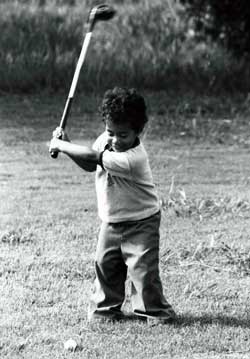
|
|
One day before one of these “big events”, a man came in to the golf shop (Earl Woods) and asked if his son could play in the tournament. He explained that his son was real young, but could hit the ball and would keep up with the other players. During his explanation, I remember sensing an attitude, like I might not allow his son to play. Turns out he had just been asked to leave another golf course (Long Beach Navy golf course) because his son was determined too young to play on the course.
(note: I guess he later shot a 48 on one of the Navy Course nines at age 3)
To be honest it didn’t matter to me how young or skillful a kid was. With real young kids I’d ask the parent to play with their child, with the un-skillful kids I gave them a stroke limit per hole to adhere too. The real deal was to have fun and play in a “golf tournament.”
|
|
Well, as I assured Earl it was OK with me, in walked Tiger’s mother and this “real” little kid. Earl introduced me to this little guy with the super short cut down club. I can’t say I really remember a lot, except Tiger looking at me, then to his dad saying “Me go putt”. Then off to the putting green he ran. I don’t know for sure but this could have been the first tournament Tiger Woods played in?
|
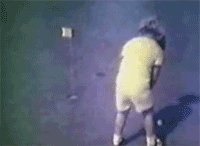
|
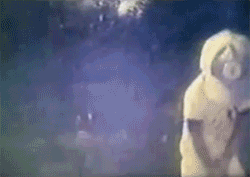
|
|
Shortly there after, at age 4 or 5, Tiger appeared on a TV show called “That’s Incredible”. After that he became very well known to everywhere in the golf world.
In later years I would briefly see Tiger from time to time. He played Old Ranch Country Club every so often during my tenure as Head Pro. His first teacher, PGA Pro Rudy Duran from Heartwell Park golf course, would bring him out to play. He also competed in an outside tournament each year at Old Ranch, the Youth Insurance Classic hosted by, Mr. Ross Mckelvie, an Old Ranch member. It was a qualifier for a big national tournament. Of course, Tiger always qualified, and I believe he won the big national event once or twice.
In hindsight, I wish I would have got to know Tiger, and Earl for that matter. Not sure if I was just too busy or just too shy. Mr. Mckelvie did a good job of keeping me up to date with what was happening to Tiger. I appreciated and enjoyed our discussions about the golfer that is and was just …..Incredible.
|

wait-once loaded--swings above never stop
|
“For many my behavior has been a major disappointment, my behavior has caused considerable worry to my business partners, and everyone involved in my business, but most importantly to the young people we influence, I apologize.”
--Tiger Woods
"No one knows what it is like being Tiger Woods"
--Bob Silver
|
Return to Featured Swings List |
Tiger is a Local |
By
Alan Shipnuck (Sports Illustrated)
April 3, 2000
|
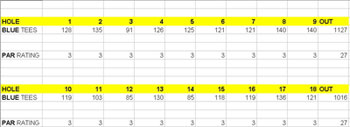
|
|
Heartwell Golf Course, tucked in a sleepy residential
neighborhood in Long Beach, Calif., does not have the air of the
historic. It lacks the grandeur of, say, the Colosseum or the
Pyramids, and it offers no windows into the soul, as do
Graceland or Monticello. Still, strolling around Heartwell is a
journey back in time because this will forever be remembered as
one of the places where Tiger Woods blossomed as a golfer, never
mind that it remains nothing more than a scruffy par-3 course
where the longest hole measures 140 yards and grass is a
precious commodity.
|
|
|
However humble, Heartwell and the other courses of Woods's youth
are the Elysian fairways that formed his earliest dreams. "You
see the 3rd hole, over there, through the trees?" asks Rudy
Duran, Woods's first teacher, during a tour of the Heartwell
course. "It's less than 100 yards, but when Tiger started
playing here, at 4 1/2, he couldn't carry that front bunker,
even with his driver. It was frustrating for him, but it was
also a good learning experience. He was introduced to strategy
on that hole--where was the best place to lay up, the best angle
to attack the green."
|

|
|
Serendipity brought Tiger and Duran together. Heartwell was the
nearest par-3 course to the Woods home, in the adjacent town of
Cypress. One day Tida Woods, Tiger's mother, showed up with her
Mozart in spikes, and asked Duran, Heartwell's head pro, if he
would take a look at her son's swing. To that point Woods had
been tutored by his father, Earl. Tiger had only a three-club
set back then, and he employed a baseball grip because his tiny
fingers were not strong enough to hold a club conventionally.
Nevertheless, Duran was flabbergasted by what he saw. "He was
like a shrunken-down Jack Nicklaus," he says, and on that day a
relationship, both professional and personal, was born.
|
|
|
Unlike Woods, Duran was late coming to golf. He had been
introduced to the game as a teenager on what he calls "divorce
weekends," when he would visit his father. (That the lifelong
bachelor would later become a father figure to thousands of
young golfers is probably less than coincidence.) Duran grew up
in the San Fernando Valley; joined the Air Force out of high
school, in 1968; and was stationed in West Germany, not a bad
assignment considering that the Vietnam War was raging. While in
the Air Force, Duran played golf nearly every day, and he turned
pro upon his discharge in 1971. He spent most of the 1970s on
the fringes of the game, going broke trying to make the PGA Tour
from 1976 to '78.
|
|
|
That bitter experience led him into teaching, and by the time
Woods was dropped on his doorstep, in 1980, Duran had
established a thriving junior program at Heartwell, allowing his
pint-sized charges to play the course for free, without
restrictions. Every Saturday there was a sprawling tournament in
which as many as 100 kids played off preestablished handicaps.
"For a while it seemed like every good golfer who came out of
Southern California was part of that junior program," says Kelly
Manos, who graduated from Heartwell to a scholarship at Southern
Cal, where he played alongside Dave Stockton Jr. Among the other
Heartwell regulars were Cypress native Amy Fruhwirth, the '91
U.S. Women's Amateur champ and subsequently an LPGA winner, and
another dozen or so players who became touring or club pros.
|
|
|
Woods thrived in this environment. Heartwell has 18 par-3s and
measures 2,143 yards. Because Tiger wasn't strong enough to reach
most of the holes with his driver, Duran, adjusting for distance,
established a "Tiger par" of 67 for the course.
|
|
|
At five Tiger received his first complete set of clubs
(including, at his insistence, a one-iron) and shortly
thereafter shot an eight-under 59, which greatly impressed
Duran. As he got older, Tiger became more competitive in the
Saturday tournaments, which were already the "peak of his week,"
according to Earl. Says Manos, "When Tiger was six, I was 16,
and we were playing together one Saturday along with some other
guys my age. We got to the 16th tee, and I said to the fellas,
'Do you realize this little s--- is tied with us?' Damned if he
didn't go on and beat all of us. It was incredible. I mean, he
was hitting three-woods, and we were swinging wedges. There was
no animosity--we were all kids, you know? It was like, 'Wow,
cool, the little guy did it.'"
|
|
|
Says Duran, "Tiger's genius wasn't his swing, although it was
very good. His genius was using his swing to shoot low numbers.
It was like an artist with a tool, carving something."
Recognizing the potential of his prodigy, Duran sought to expand
his education at every turn. In 1984, when Tiger was eight,
Duran took him to watch his first pro tournament, the L.A. Open
at Riviera. Later that year Duran teed it up in the Queen Mary
Open, a minitour event in Long Beach, and Tiger served as his
caddie, chugging along with a pull cart.
|
|
|
By 1985, Heartwell was but a fond memory. American Golf had
snapped up the course and put the kibosh on the junior program.
Duran moved one town to the north, to Bellflower, and its
eponymous golf and tennis center. The Bellflower range was
shoddy at best, but its nine-hole par-3 course forced Tiger to
expand his game. Five of the holes exceeded 140 yards--the
length of Heartwell's longest hole--including the 7th, which
played to 167 yards, and the 9th, a robust 190-yarder. Tiger
spent more than two years mastering the course.
|
|
|
In reconstructing the time line of Tiger's development, 1986,
when he was 10, was the pivotal year, the one during which he
lost a teacher but gained an important golf course. In '86,
Duran spent all of his time managing two excellent 18-hole
courses in Paso Robles, a dusty farming town in central
California. "It was a major career opportunity," he says, "and I
couldn't say no." To continue Tiger's instruction, Earl hired
John Anselmo, who was teaching at Los Alamitos Golf Course, a
muni one mile from the Woods house. Even closer to home was the
Navy Golf Course in Cypress, with its minimum-age requirement of
10. After his birthday on Dec. 30, 1985, Tiger was finally
eligible to play there, although he already had a history at the
course.
|
|
|
First the history. At 18 months Tiger played his first hole, a
410-yard par-4 at the Navy. He made an 11, including three
putts. Though Tiger wasn't supposed to be on the course, at the
beginning no one seemed to mind, as long as he played with his
father. At three Tiger broke 50 over nine holes for the first
time, shooting a 48 from the red tees, which over 18 holes
measured a healthy 5,903 yards. "The score wasn't important,"
says Earl. "Even back then we gave Tiger a par to play off based
on how far he could hit the ball. There were a lot of par-8s and
par-9s, and at the end of the day he was always under par. This
is important: He never developed a complacency or a fear of
going low."
|
|
|
Around the time of Tiger's fourth birthday some of the regulars
at the Navy course--a facility open to members of the military
but not the general public--took issue with his constant
presence, and that was when he found Heartwell. By the time he
turned 10, Tiger was ready to exact his revenge on the Navy Golf
Course. He was already raising eyebrows with his length, and the
wide-open fairways at Navy didn't punish his wildness. He became
a regular at the course, usually competing against, and beating,
men three to four times his age.
|
|
|
"The progression of courses was ideal," says Earl. "At
Heartwell, Tiger learned how to be accurate and how to score
around the greens. At Bellflower he learned how to attack longer
holes. At Navy he was forced to pull all this knowledge together
and compete against more mature players on a regulation-sized
track."
|
|
|
All three of those courses featured flat, boring, push-up
greens. Los Alamitos, where Woods continued to work with
Anselmo, was a quirky little bandbox crammed onto less than 100
acres, and the greens were, says Earl, "slopy and grainy and
funky." It was on these greens that Tiger learned to read breaks
and control the speed of his putts. (In 1992 Los Al was
redesigned by Perry Dye and renamed Cypress Golf Club. Four
years later, just a couple of weeks before he would win his
third straight U.S. Amateur, Woods shot a 63 there, which
remains the course record.)
Sadly, the course is no longer there.
|
|
|
In 1987, when Tiger was 11, Anselmo moved on to Meadowlark Golf
Club, an upscale daily-fee facility in Huntington Beach, the
self-styled Surf City 15 miles south of Cypress. Meadowlark has
a gorgeous range, which became the workshop of Anselmo and
Woods. (Woods rarely, if ever, played the course.) By then
Anselmo was beginning his fourth decade as a teaching pro. In
the years after World War II he had barnstormed on the pro
circuit, playing in events up and down the West Coast. Anselmo
was influenced by the swings of Ben Hogan and Sam Snead, and
those influences became the touchstones of his dialogue with
Tiger. Duran had provided access, enthusiasm and strong
fundamentals. Anselmo offered more sophisticated information.
|
|
|
"Tiger was already an accomplished player when he came to me,"
says Anselmo. "He had the basics down cold. Now he wanted more
than that. How do you play knockdown shots? How do you play flop
shots? Stuff like that. I'll never forget the day he came to me
when he was still a little kid and said, 'How do you get rid of
backspin?' I said, 'Tiger, 99 percent of golfers are dying to
get backspin, not get rid of it. Why don't you keep the spin and
play the ball past the hole and bring it back?' He just nodded
his head. I could tell he filed that away for future reference."
|
|
|
By his early teens Tiger had expanded his range in every sense.
He was routinely blowing drives over the net at the back of the
Meadowlark practice tee, which was 225 yards out and 50 feet
high. Thanks to the Southern California Junior Golf Association,
Tiger was also seeing more courses than the Navy. Five days a
week members of the association traveled to tracks across the
Southland, including a handful of private clubs. "That was
important because I wanted Tiger to have the same experiences
and the same facilities as country club kids," says Earl. "I
didn't want him to be shocked when he got out on Tour and saw
those courses."
|
|
|
In the summer of 1992, when Tiger was 15 and coming off his
second of three straight U.S. Junior Amateur victories, Earl got
an unexpected phone call. On the other end of the line was Bob
Lovejoy, head pro at swank Big Canyon Country Club, in tony
Newport Beach, the next beach town south of Huntington. Designed
by Robert Muir Graves and built in 1971, Big Canyon has since
its beginning catered to the Orange Country aristocracy, a fact
reflected by the club's outrageous membership fees (currently
rumored to exceed $150,000). Lovejoy was dangling an honorary
membership in front of Tiger. "The club's policy has always been
to help out young, up-and-coming golfers when we could," says
Lovejoy, now Big Canyon's director of golf. "Generally these
were aspiring pros starting out, but in Tiger's case we were all
aware of his potential. I went to the club president and said,
'Why not approach the best junior in the world?'"
|
|
|
Tiger was made an honorary member with the blessing of the USGA
and the NCAA. He haunted the course throughout high school, and
it was a much-needed test for his game, which was long but often
wrong. Big Canyon plays 6,876 yards from the back tees, with a
slope of 135 and a course rating of 73.9. The course sprawls up
and down spectacular, rolling countryside, and there isn't a
single flat hole. However, it has plenty of old-growth trees.
"Tiger took two or three years to break par at Big Canyon because
he was so damn wild," says Earl. "I used to tell him he was aptly
named because he was always in the woods. He would say, 'Yeah,
Pop, but I can get out.' Big Canyon is where he learned those
escape shots, where he learned never to be intimidated by being
in trouble."
|
|
|
In the spring of 1996, when he was a sophomore at Stanford, Woods
brought Big Canyon a measure of renown (and vice versa) by going
61-65 on the opening day of the Pac-10 Championships, which was
held at the course. Both rounds beat the course record. Later in
'96 Woods turned pro and almost overnight became a corporation
unto himself, but little has changed in his relationship with Big
Canyon. He's still an honorary member, and it's still his home
course when he's in Southern California. (Woods has a bachelor
pad in Manhattan Beach, 25 miles up the coast.)
|
|
|
In a delicious twist of fate, Woods's old Heartwell buddy,
Manos, has been a pro at Big Canyon since 1995. They don't get
to play together too often, but there have been a few memorable
tilts. "The summer before his third U.S. Amateur we went out,
and I took him on the front nine straight up, 32-34," says
Manos. "On the 13th hole we saw lightning in the foothills. I
was like, 'Uh, Tiger, it's time to go in,' but he wouldn't
budge. He wanted to keep playing. By 16 I'm still ahead in the
match. The rain is really coming down, and there's some thunder
too. All I want to do is get inside, but Tiger wants to finish
the round, so we did. Well, I held on to win the match and $20.
He claimed not to have any money, as usual, so I never saw a
dime. Every time I've seen him since, I bring up that 20 bucks,
but he won't pay. All he ever says is, 'I tell you what, I'll
play you for it.' I'd rather have the 20 bucks, you know? I may
have beaten him once, but he's pretty much been kicking my butt
since he was 4 1/2 years old."
|
|
Return to Players Swings List |
|

